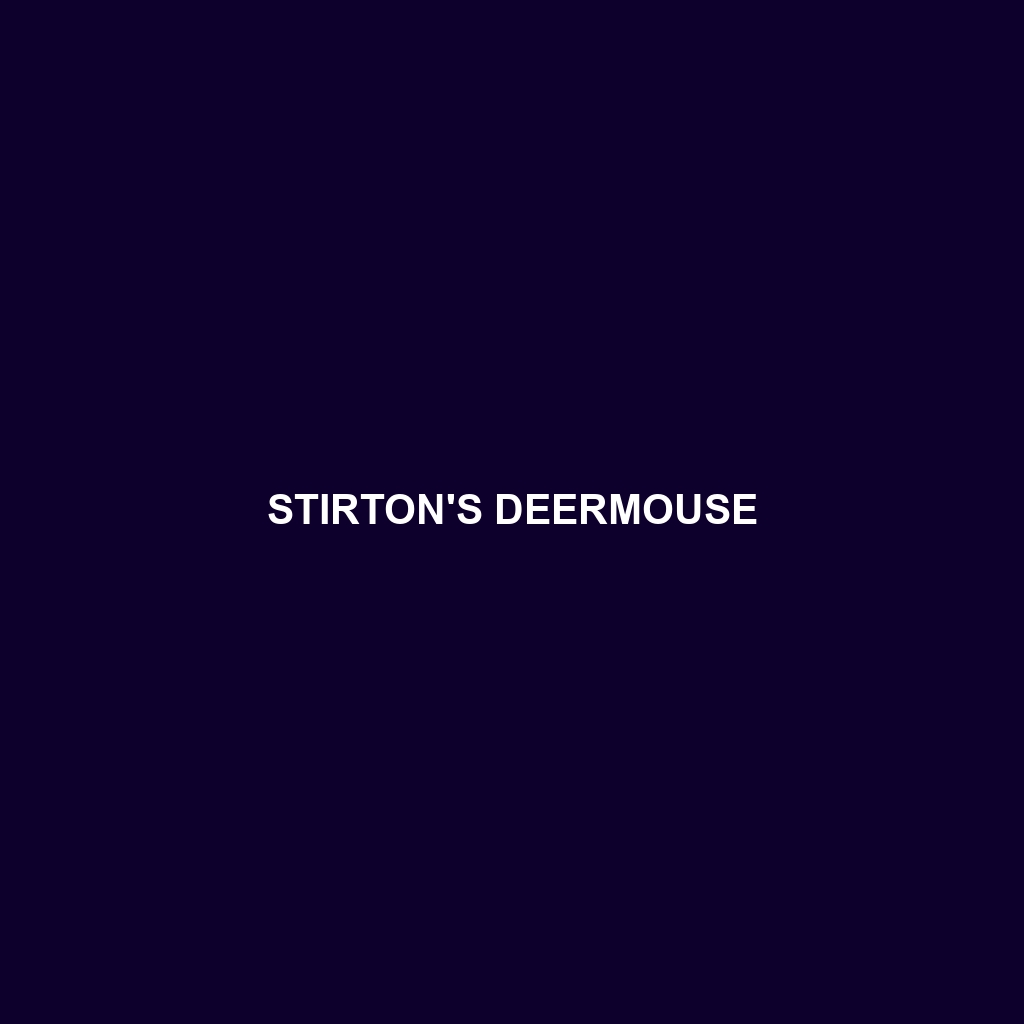Stirton’s Deermouse – Species Description
Common Name: Stirton’s Deermouse
Scientific Name: Peromyscus stirtoni
Habitat
Stirton’s Deermouse is primarily found in the mountainous regions of western and central Mexico. This species inhabits diverse environments, including dry temperate forests, scrublands, and grasslands. The mouse prefers areas with dense underbrush, which provides ample cover and food sources.
Physical Characteristics
This small rodent typically measures between 7 to 10 inches in length, including its tail, which is slightly longer than the body. Stirton’s Deermouse has a slender build with soft, tawny fur on its back and a lighter-colored belly. Notable features include large, expressive ears and dark eyes, which aid in night vision. Its long tail is often bicolored, with a dark top and lighter underside, making it easily recognizable.
Behavior
Stirton’s Deermouse is primarily nocturnal, exhibiting crepuscular behavior where it becomes most active during dawn and dusk. Known for its agility and quick movements, this species utilizes both burrowing and climbing as part of its adaptation to escape predators. Communication among individuals is accomplished through various vocalizations, body language, and scent marking.
Diet
The diet of Stirton’s Deermouse is omnivorous, primarily consisting of seeds, fruits, and insects. It forages on the forest floor, often gathering and storing food for later consumption. This feeding behavior plays a crucial role in seed dispersal, promoting plant growth in its habitat.
Reproduction
Stirton’s Deermouse typically breeds once a year during the warmer months, usually between April and August. Females give birth to litters of 2 to 7 offspring after a gestation period of about 25 days. The young are altricial at birth, requiring maternal care for several weeks before they become independent.
Conservation Status
Currently, Stirton’s Deermouse is classified as vulnerable by the International Union for Conservation of Nature (IUCN). Habitat loss due to agriculture and urban development poses significant threats to its population. Conservation efforts are crucial to protect its remaining habitats and ensure long-term survival.
Interesting Facts
Stirton’s Deermouse is named after the American mammalogist, Robert Stirton, who contributed significantly to the study of North American rodents. Interestingly, this species has shown remarkable adaptability to changing environments, which helps it thrive in various habitats.
Role in Ecosystem
Stirton’s Deermouse plays a vital role in its ecosystem as both a prey species and a seed disperser. As a source of food for various predators, including birds of prey, snakes, and larger mammals, its population health directly impacts the balance of its natural habitat. Additionally, by aiding in seed dispersal, it contributes to plant diversity, helping to maintain the integrity of its environment.
